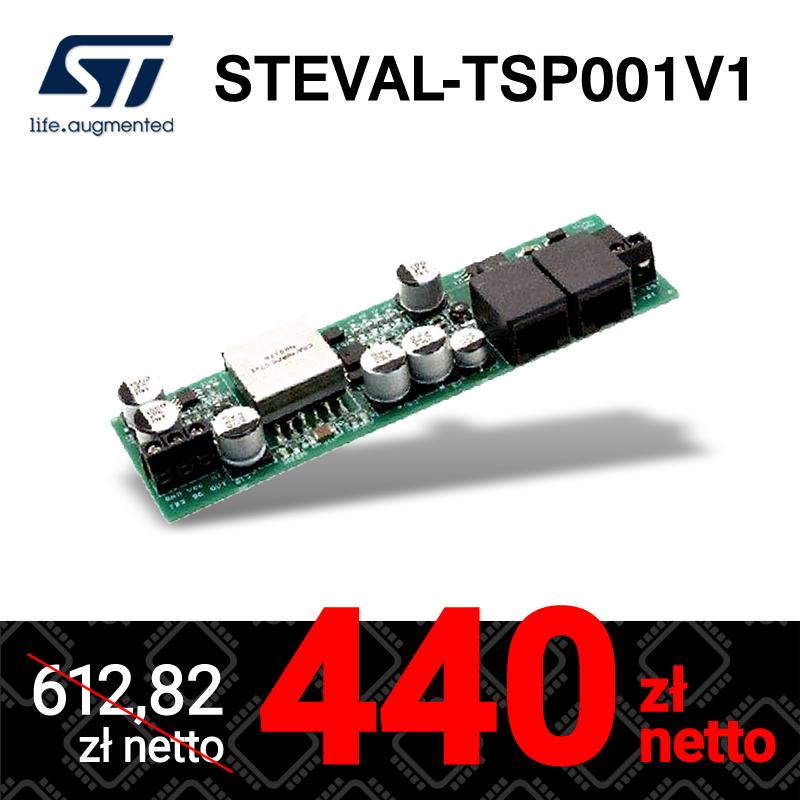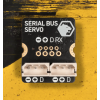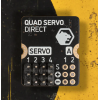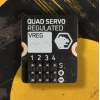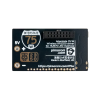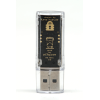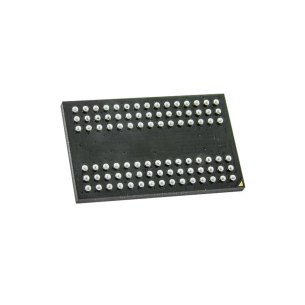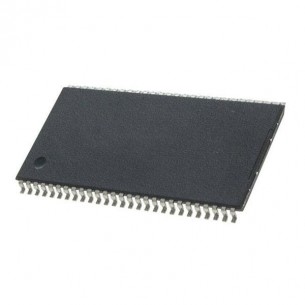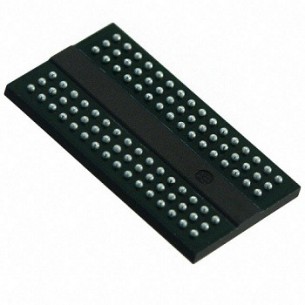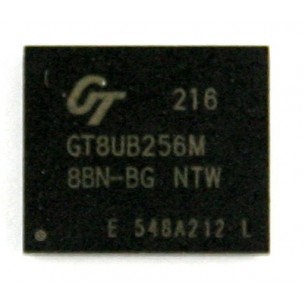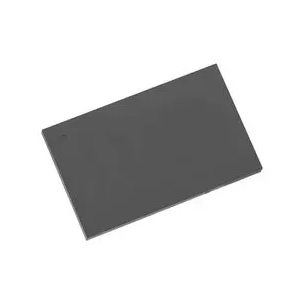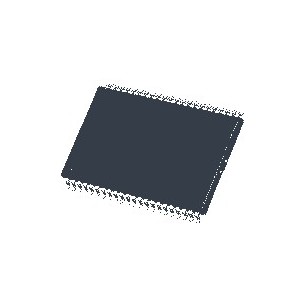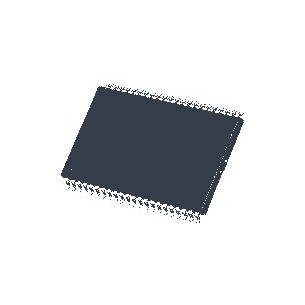Products
Categories
- Main categories
-
- 3D PRINTING
- ARDUINO
- AUTOMATION
- BOOKS
- CYBERSECURITY
- EDUCATION
- ELECTRONICS
- Cables
- Cameras and accessories
- Communication
- Conductive materials
- Connectors
- ARK connectors (Terminal Block)
- Banana connectors
- Coaxial connectors (RF)
- Connectors
- Crocodile clip
- D-Sub drawer connectors
- DC power connectors
- FFC/FPC ZIF connectors
- Goldpin connectors
- IDC connectors
- JACK connectors
- JST connectors
- Jumpers
- Memory cards slots
- Other connectors
- Pogo pin
- Quick couplers
- RJ45 connectors
- Slip ring connector
- Supports
- USB connectors
- USB PD Adapters for Laptops
- WF connectors
- Cooling
- Displays
- Electronic modules
- A/D and D/A converters
- Audio
- Barcode readers
- CAN converters
- Converters USB - UART / RS232
- Cryptographic module
- Data logger
- DDS/PLL generators
- Digital potentiometers
- Encoders
- Expanders of the I/O
- Fingerprint readers
- Galvanic isolation modules
- HMI modules
- Image and video
- JTAG accessories
- Keyboards, buttons
- LED drivers
- Memory card readers
- Memory modules
- Modules with power outputs
- Motor controllers
- Power modules
- RS485 converters
- RTC modules
- Servo Controllers
- TSOP infrared receivers
- USB Converters - I2C / 1-Wire / SPI
- Voltage converters
- Gadgets
- GPS
- Intelligent clothes
- LED - diodes, displays, stripes
- Luminous wires and accessories
- Machine vission (MV)
- Memory cards and other data storages
- Passive elements
- PC accessories
- Printers
- Programatory czasowe
- Prototype boards
- Relays
- Semiconductors
- A/C converters (ADC)
- Analog systems
- Audio systems
- Bridge rectifiers
- Button
- D/A Converters (DAC)
- DDS synthesizers
- Digital circuits
- Diodes
- Drivers of motors
- DSP microprocessors
- Energy counters
- Energy harvesting
- ESD security
- IGBT drivers and bridges
- Interface systems
- LED drivers
- Logic converters
- Memory
- Microcontrollers
- Optotriacs and optocouplers
- Other
- PLL generators
- Power systems
- Programmable systems
- Resetting systems
- RF systems
- RTC systems
- Sensors
- SoC systems
- Timery
- Touch sensors
- Transistors
- Sensors
- Accelerometers
- Air humidity sensors
- Air quality sensors
- Current sensors
- Distance sensors
- Flow sensors
- Gas sensors
- Gyroscopes
- Hall sensors
- Humidity sensors
- Infrared sensors
- Laser scanner
- Light and color sensors
- Liquid level sensors
- Magnetic sensors (compasses)
- Medical sensors
- Motion sensors
- PH sensors
- Position sensors
- Pressure sensors
- Pressure sensors
- Reflection sensors
- Sensors 6DOF/9DOF/10DOF
- Sensors of liquid quality
- Temperature sensors
- Vibration sensors
- Sound transducers
- Switches and buttons
- Cables
- FPGA DEVELOPMENT KITS
- MEASURING DEVICES
- Anemometers
- Cable testers
- Distance measurement
- Electronic loads
- Generators
- Insulation resistance meters
- LCR meters
- Logic analyzers
- Measures and calipers
- Multimeters
- Network analyzers
- Oscilloscopes
- Other meters
- Panel meters
- Radiation detectors
- Sound meters
- Temperature measurement
- Testery USB
- Voltage indicator
- Wattmeters
- Weights
- MECHANICS
- MINICOMPUTERS (SBC)
- POWER
- RASPBERRY PI
- Accessories for Raspberry Pi
- Audio video cables for Raspberry Pi
- Case Raspberry Pi
- Cooling for Raspberry Pi
- Displays for Raspberry Pi
- Extension modules for Raspberry Pi
- Memory cards for Raspberry Pi
- Power for Raspberry Pi
- Raspberry Pi 3 model A+
- Raspberry Pi 3 model B
- Raspberry Pi 3 model B+
- Raspberry Pi 4 model B
- Raspberry Pi 400
- Raspberry Pi 5
- Raspberry Pi 500
- Raspberry Pi cameras
- Raspberry Pi Compute Module
- Raspberry Pi model A/ B+/2
- Raspberry Pi Pico
- Raspberry Pi prototyping
- Raspberry Pi Zero
- Raspberry Pi Zero 2 W
- RETIRED PRODUCTS
- SALE
- STARTER KITS, PROGRAMMERS, MODULES
- Atmel SAM
- Atmel Xplain
- AVR
- Coral
- DFRobot FireBeetle
- ESP32
- ESP8266
- Feather / Thing Plus
- Freedom (Kinetis)
- M5Stack
- Micro:bit
- Nordic nRF
- Other development kits
- Particle Photon
- Peripheral modules
- PIC
- Raspberry Pi RP2040
- RFID
- RISC-V
- Seeed Studio LinkIt
- Segger programmers
- SOFTWARE
- Sparkfun MicroMod
- STM32
- STM32 Discovery
- STM32 MP1
- STM32 Nucleo boards
- STM8
- Teensy
- Universal programmers
- WRTNode
- XIAO/Qt PY
- Atmel SAM
- WORKSHOP
- Adhesives for hot glue guns
- Chemistry
- Agents for securing electronics
- Cleaning and preserving agents
- Compressed air
- Conductive paints and varnishes
- Distilled water
- Etcher
- Freezing
- Gas for lighters and burners
- Isopropyl alcohol (IPA)
- Label removers
- Lubricants, oils
- Pastes and adhesives thermally conductive
- PCB cleaning products
- Thermopads - thermally conductive tapes
- CNC milling machines
- Crimping tools
- Dispensing needles
- Gluers
- Glues
- Heat-shrink tubing
- Insulation strippers
- Knives
- Laboratory power supplies
- Microscopes
- Mini drills and grindrers
- Organizers
- Personal protection (OHS)
- Power tools
- Sandpapers
- Scissors
- Soldering
- Antistatic mats and accessories (ESD)
- BGA balls
- BGA rework stations
- Brushes and ESD brushes
- Desoldering Wick
- Handles, magnifiers
- Heat guns
- Heaters and soldering irons
- Laminates
- Portable soldering irons
- Silicone Soldering Mats
- SMD Accessories
- Soldering accessories
- Soldering chemistry
- Soldering irons
- Soldering pastes
- Soldering pots
- Soldering stations
- Soldering tips
- Sponges and cleaners
- Stand for soldering irons
- Tin
- Tin extractors
- Ultrasonic cleaners
- Tapes (aluminum, kapton, copper, insulating)
- Tools
- Tweezers
- Vices
- Workshop lighting
- 3D PRINTING
New products
New products New products
Category: SDRAM memory
SDRAM Memory: The Heart of Modern Electronic Devices
SDRAM (Synchronous Dynamic Random-Access Memory) forms the foundation of modern electronic devices, combining advanced technologies with a wide range of applications. From personal computers to smartphones and advanced industrial systems, SDRAM memory is an indispensable component that drives our digital world. By synchronizing with the system clock, SDRAM provides higher performance and speed compared to traditional DRAM. The development of this technology goes hand in hand with the increasing demands of the market, and forecasts indicate further innovations that will enhance their efficiency and application in new areas.
There are 9 products.
The ISSI IS42S32800J-6BLI is a low-voltage 256 MB SDRAM, organized as 8 MB x 32 bits, operating at up to 166 MHz. With a compact BGA90 package and an operating temperature range of -40°C to +85°C, it is ideal for applications in embedded systems, industrial and consumer devices.
AS4C16M16SA-7TCN, Synchronous DRAM (SDRAM) memory 256Mb (16Mx16bit), 54-TSOP II
The 64Mb APS6404L-3SQR-SN DRAM is a fast and power-efficient device, ideal for embedded systems, IoT applications and portable devices, operating in SDR mode with QSPI interface and frequency up to 133 MHz. It provides high performance at low power consumption, making it an optimal choice for demanding applications.
The EDB4432BBBJ-1D-F-D is a 4-gigabit LPDDR2 SDRAM memory chip from Micron Technology, offering an organization of 128M x 32 bits and a maximum clock frequency of 533 MHz. It operates within a supply voltage range of 1.14 V to 1.95 V and is housed in a 134-pin WFBGA package with dimensions of 10 x 11.5 mm.
No product available!
MT41K512M16HA-125 is an 8Gb DDR3 DRAM that operates at up to 800MHz at a low voltage of 1.35V, ideal for systems requiring high bandwidth and energy efficiency. With a 512Mx16 organization and an operating temperature range of 0°C to 90°C, this memory offers fast data access and reliability in a variety of applications such as servers and industrial computers.
No product available!
Versatility and Applications
SDRAM memory is characterized by exceptional versatility. It is used in a variety of devices, from personal computers and mobile devices to industrial and medical equipment. Its ability to operate at high speeds and compatibility with different types of processors make it an ideal solution for applications requiring fast data processing. Continuous development ensures that SDRAM memory also finds applications in new, rapidly growing sectors such as the Internet of Things (IoT), artificial intelligence (AI), and advanced computing technologies.
Technological Breakthrough and Future of SDRAM
SDRAM memory has come a long way since its inception, evolving towards higher performance and lower energy consumption. Innovations such as DDR (Double Data Rate), LPDDR (Low Power DDR), and DDR4 and DDR5 have significantly enhanced the capabilities of these memories. The future of SDRAM looks promising, with expected improvements in speed, capacity, and energy efficiency, making it even more indispensable in future technologies such as 5G, blockchain, edge computing, and data center development.
Conclusion: Key to Success in the Digital Era
SDRAM memory is not only the technological foundation of modern electronic devices but also a crucial element of their future development. Its technological advancement, wide range of applications, and dynamic growth make it an essential component in the pursuit of increasingly advanced and efficient systems. By choosing SDRAM memory, we are investing in a future that promises continuous progress and new opportunities in the field of technology. With reliability and innovation, SDRAM memory is and will continue to be a key element in the technological revolution of the 21st century.

